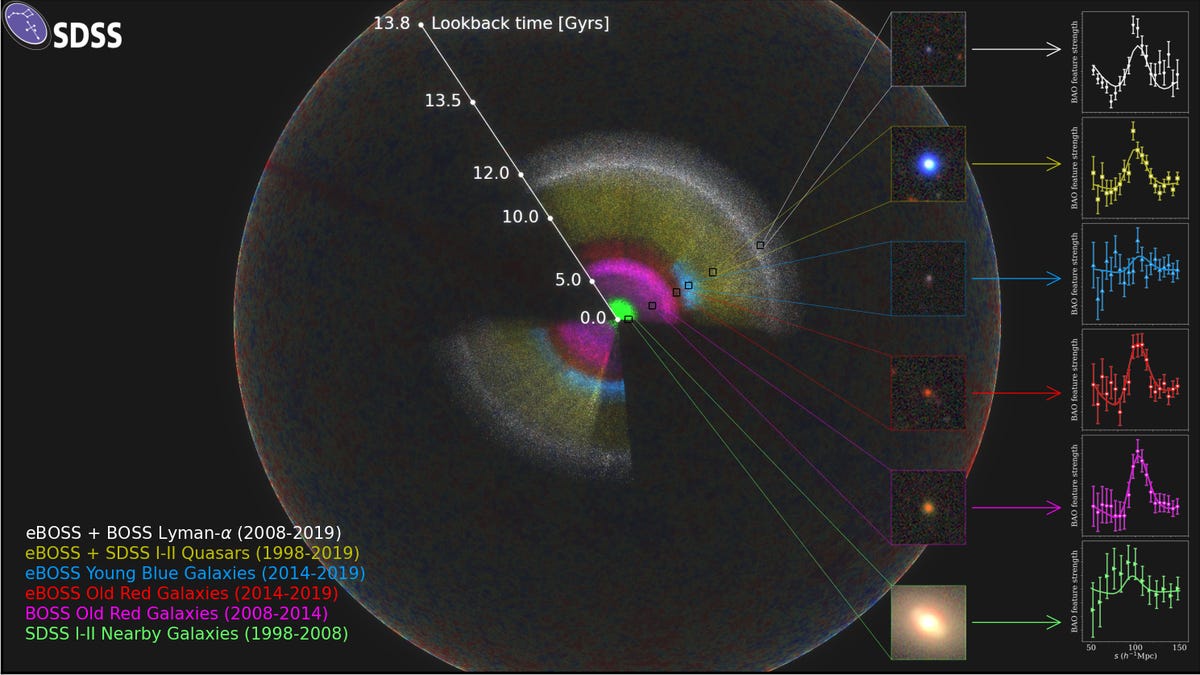Scientists reveal biggest 3D map ever of the universe
In creating the map, they discover the rate of the universe's expansion isn't what we thought.

The map was created using data from an optical telescope in New Mexico, documented as part of the extended Baryon Oscillation Spectroscopic Survey (eBOSS).
Mapmaking has been part of human culture for thousands of years, from Babylonian clay tablets to the Mercator projection map we most often see in schools. The next mapping adventure? The entire universe.
Astrophysicists on Monday released the largest ever 3D map of the universe, spanning time and space with more detail than ever before.
Over the course of two decades, scientists from all over the world compiled the map after analyzing more than 4 million galaxies and quasars, creating a representation that contributor Will Percival of the University of Waterloo in Canada regards as the "complete story of the expansion of the universe." Part of that story, the scientists say, is that about 6 billion years ago, the expansion of the universe began to accelerate, and it's continued to get faster since.
The map -- released by the Sloan Digital Sky Survey (SDSS) -- was created using data from an optical telescope in New Mexico, documented as part of the extended Baryon Oscillation Spectroscopic Survey (eBOSS) out of the SDSS.
In making the map, scientists discovered the current accepted rate of the universe's expansion, the Hubble Constant, is about 10% lower than the value found from distances to nearby galaxies.
"Only with maps like ours can you actually say for sure that there is a mismatch in the Hubble Constant," said Eva-Maria Mueller, lead analyzer from the University of Oxford.
Jean-Paul Kneib, leader of the eBOSS survey and an astrophysicist from the Swiss Federal Institute of Technology, said in a statement the researchers had used the technology and data to make "the most accurate expansion history measurements over the widest ever range of cosmic time."
"To create the part of the map dating back 6 billion years," according to the statement, "the team used large, red galaxies Farther out, they used younger, blue galaxies. Finally, to map the universe 11 billion years in the past and more, they used quasars, which are bright galaxies lit up by material falling onto a central supermassive black hole. Each of these samples required careful analysis in order to remove contaminants and reveal the patterns of the universe."

